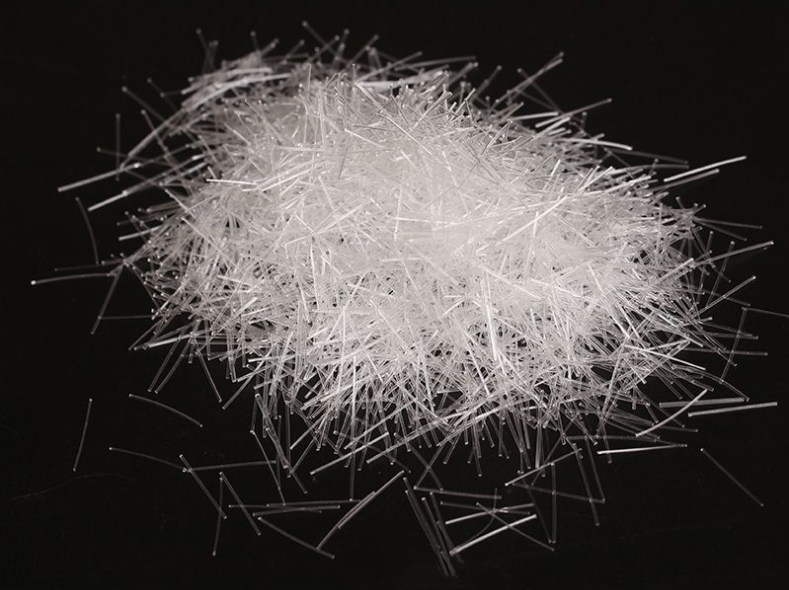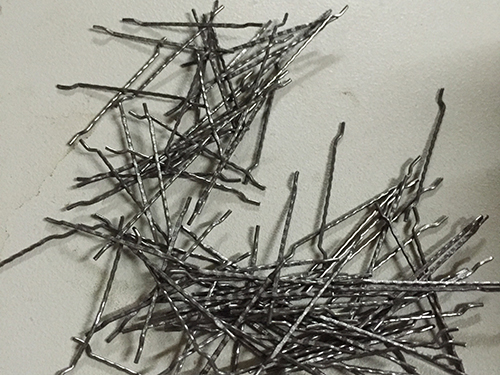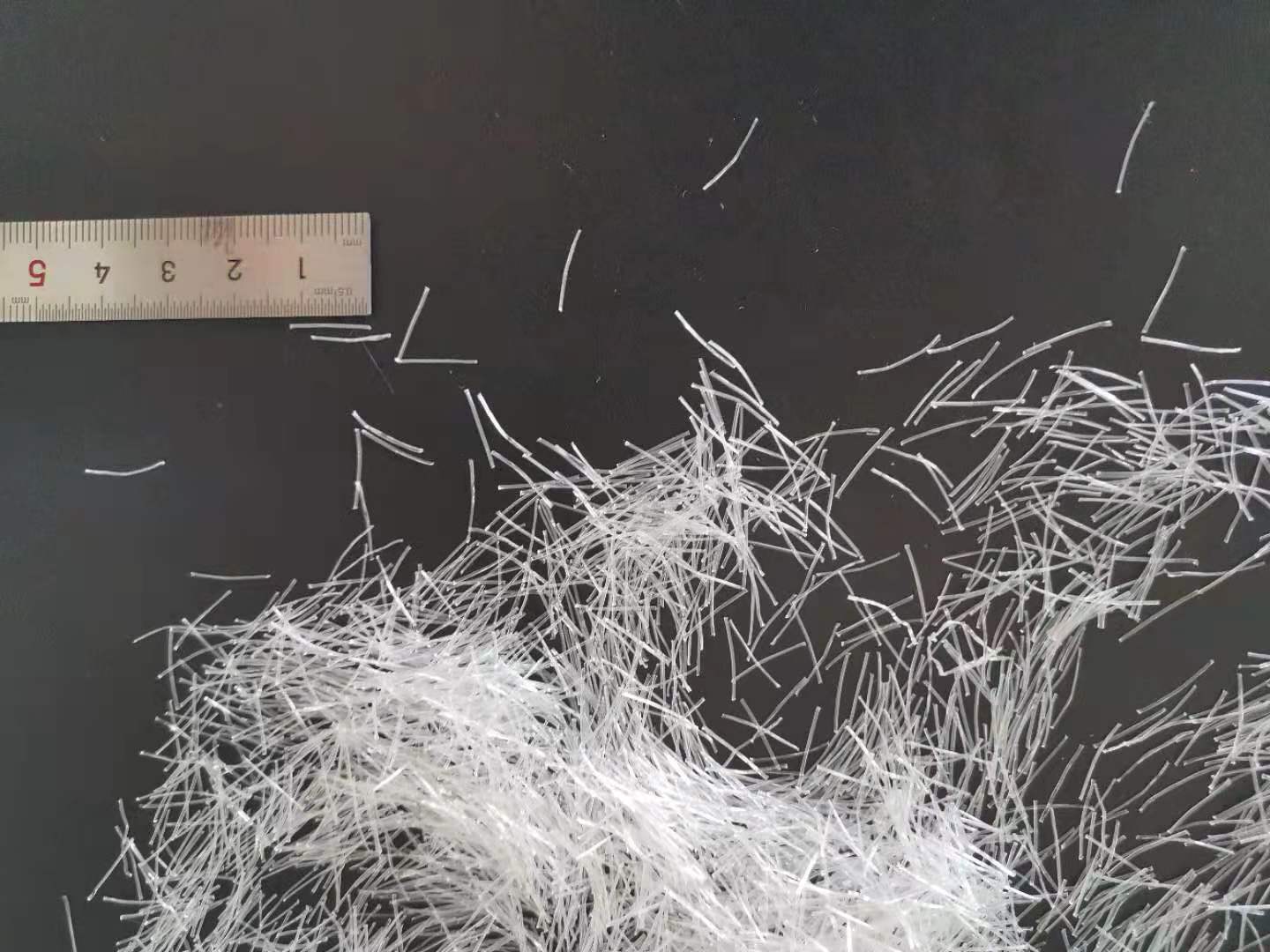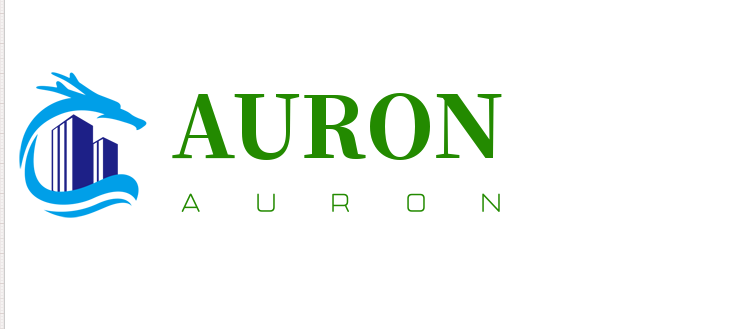Concrete polypropylene fiber is a new type of concrete reinforcing fiber, which is called the "secondary reinforcement" of concrete. The flame retardant modification of polypropylene fiber is mainly prepared by adding modification and flame retardant finishing.

1 Classification
Monofilament polypropylene fiber
It is a kind of high strength polypropylene fiber, which has excellent dispersion and grip force with cement body through special surface treatment technology. It is generally used in fine stone concrete. Concrete fiber (12-19mm concrete special fiber is recommended for concrete with high strength and good crack resistance effect.) The tensile strength is more than 500MPa, and the elongation at break is 15-25% and the modulus of elasticity is more than 3800mp1, which can effectively improve the crack resistance of mortar and concrete. The experiment shows that, compared with ordinary mortar / concrete, if the volume of fiber is 0.1% (about 0.9kg/m3), the crack resistance of mortar / concrete is increased by 70%. 2. The impermeability of concrete is greatly improved. The permeability resistance of the polypropylene fiber reinforced concrete with 0.9kg/m3 content is 60% - 70% higher than that of the ordinary concrete. 3. The impact resistance and wear resistance of concrete are improved significantly. Although the rigidity of polypropylene fiber is low and the capacity of load transmission is poor, it can absorb impact energy, effectively reduce cracks, enhance the continuity of media materials, reduce the local stress concentration caused by the blocking of shock wave, so it can greatly improve the impact resistance and toughness of concrete. 4. The frost resistance of concrete is improved. Adding polypropylene fiber to concrete can alleviate the effect of internal stress caused by temperature change and prevent the expansion of temperature cracks; At the same time, the improvement of the impermeability of concrete is also conducive to the improvement of its frost resistance. The practice and research show that adding polypropylene fiber to concrete can be used as an effective method to compensate the temperature difference of concrete. 5. Improve the quality of concrete products, effectively maintain the integrity of the edges, corners and surfaces of the products, so that the steel bars in the products are not corroded. Mortar fiber (it is recommended that the special fiber of 3-12mm mortar is used for mortar with good dispersive property, good toughness and good toughness, which can effectively prevent the performance ratio of pilling mortar fiber: the fiber added in mortar is mainly to give mortar a certain toughness, improve the anti crack performance of mortar, and inhibit the early crack of mortar, which mainly has the following functions: (1) crack resistance, The defects in the mortar matrix are prevented from spreading and the cracks are effectively delayed( 2) Seepage prevention: improve the compactness of mortar matrix and prevent the invasion of external water( 3) Durability, improve the performance of the mortar matrix, such as frost resistance, fatigue resistance, and improve its durability( 4) Impact resistance: improve the deformation resistance of mortar matrix, thus improving its toughness and impact resistance( 5) Tensile: the use of fiber can improve the tensile strength of the matrix( 6) High toughness: mortar fiber has high toughness and strength, which is not easy to bend into balls in mortar mixing. The appearance of the mesh polypropylene fiber is a mesh structure formed by the intersection of multiple fiber single wires. When polypropylene mesh fiber is put into concrete, the transverse connection between fiber monofilament is destroyed by the rubbing and friction of concrete itself, forming the fiber monofilament or net structure fully open, so as to achieve the effect of many polypropylene fibers evenly mixed into concrete.
Engineering polypropylene fiber
It is a new type of concrete fibers, which is called "secondary reinforcement" of concrete. The quality of concrete mixed with polypropylene fiber is improved, and the comprehensive performance is improved. It has the characteristics of simple mixing process, low price and excellent performance. As a new type of reinforced concrete fiber, polypropylene mesh fiber is becoming a new hot spot in the field of scientific research and application of fiber reinforced concrete after glass fiber, steel fiber and stainless steel fiber
2 Flame retardant modification
The flame retardant effect of polypropylene fiber is mainly obtained by using halogen flame retardant and antimony trioxide synergist. Usually, high concentration flame retardant and other additives are added to polypropylene chips, and flame retardant masterbatch is made by blending. Then, the flame retardant polypropylene fiber is prepared by melt spinning with conventional polypropylene fiber. Phosphorus bromine synergistic flame retardant system has good flame retardant effect and less environmental pollution for polypropylene fiber, while phosphorus nitrogen synergistic flame retardant system has better flame retardant effect for polypropylene fiber, but the application conditions in polypropylene fiber are relatively high.
3 Procedure
1. Use method (1) accurately calculate the mixing amount. When using, manually add the fiber and aggregate such as sand and stone at the same time. It is best to add the fiber in the middle of sand and stone, and then add water and wet mix( 2) The mixing time is slightly longer than that of plain concrete by 30 ~ 60s to ensure that the fiber is evenly dispersed in the mixture.
2. Adjustment of slump due to the thickening effect of fiber, the addition of fiber will increase the viscosity of concrete mixture and slightly reduce the slump. If the slump cannot meet the construction requirements, the water volume shall not be increased to improve the slump, but plasticizer or water reducer shall be properly used to improve the slump to meet the construction requirements.
3. Strength test: the addition of fiber will not affect the strength of concrete, but the strength test of fiber concrete should be carried out according to the determined concrete mix proportion before each project is used.
4. There are no special requirements for the molding and curing of concrete mixed with fiber, which can be carried out according to the curing of normal concrete. The early curing of concrete cannot be relaxed due to the addition of fiber.







